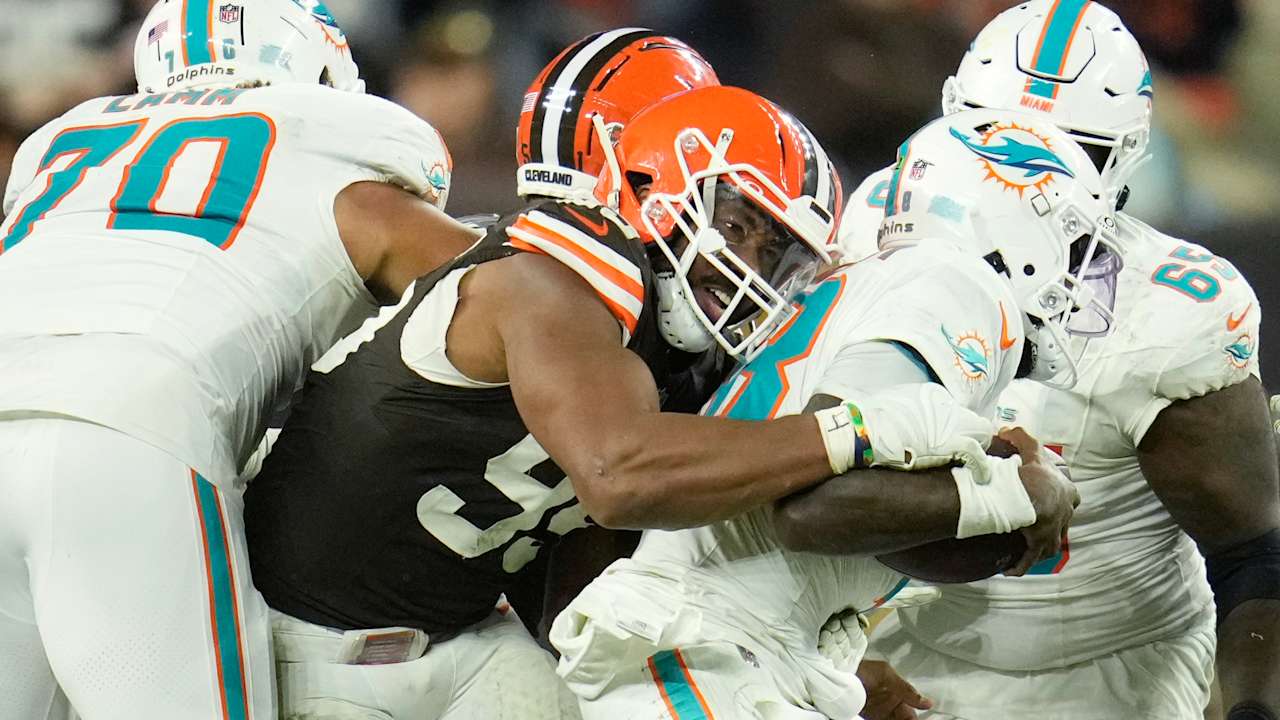NFL wild-card best and worst coaching decisions: Todd Monken, Ravens outwit Steelers’ D

You’ve heard it a million times from commentators, but playoff football is different. Some coaches adjust and can quickly change their identity, and others stick to what got them to the big dance.
The Baltimore Ravens rode option football en route to a blowout, Houston Texans offensive coordinator Bobby Slowik moved away from his typical play-calling pattern, and Washington Commanders coach Dan Quinn stayed true to himself.
Steelers’ regressive option defense
The appeal of divisional matchups is the strategic back-and-forth that takes place across games rather than quarters or halves. The Pittsburgh Steelers have had three games to solve the Ravens’ otherworldly pairing of Derrick Henry and Lamar Jackson.
In Week 11, the Steelers held Henry to his lowest yardage since the season opener. The Ravens have become more of an under-center run team with Henry because that’s where he’s most effective, but in Week 16, Todd Monken made the adjustment to spread out the Steelers defense and run Henry from the shotgun. The results: Henry ran for 162 yards (6.8 yards per carry) and had more rushing yards from shotgun than he’s ever had (113 yards).
GO DEEPER
In manhandling Steelers, Ravens show their playoff potential: ‘This is the appetizer’
When the Ravens are in shotgun, Jackson has the option to keep the ball, and defenses must pick their poison. There are games the defense has to play with the offense to try to even out the numerical problem of the quarterback keeping the ball. You have to have answers, and the Steelers should know that by now. They’ve tried methods for stopping the option for years, but this week, they went to one of the oldest in the book — the scrape exchange — and repeated it the whole game. Monken and the Ravens were ready.
9:59 remaining in the second quarter, second-and-1

A scrape exchange is essentially a swapping of responsibilities between the defensive end and linebacker on the side to which the running back is offset. This play is the only example of it’s working. The end that is to the back’s side is left for the quarterback to read. T.J. Watt’s responsibility is to crash the running back to force Jackson to keep the ball, and linebacker Peyton Wilson loops around to take Jackson.

Watt tackled running back Justice Hill, and Wilson avoided a block and handled Jackson.
The Ravens added a blocker to the backside to block the scraping linebacker, and the Steelers’ response was to bring down a safety to replace him. That sounds fine in theory, but the problem was Jackson was already 4 yards downfield when the replacement player got there, and Jackson is hard to tackle in space.
6:20 remaining in the third quarter, first-and-10

Here, the Ravens had tight end Mark Andrews on the backside to block linebacker Alex Highsmith, who was supposed to crash Henry. Elandon Roberts (No. 50) was the scrape linebacker, and safety DeShon Elliott (No. 25) was the replacement player.

This is a very difficult block for Andrews to make, but he managed to run Highsmith past Henry. Roberts looped around for Jackson, but the problem was no one forced him to keep the ball.

Roberts just abandoned the A-gap, and the replacement player ran to Jackson, leaving no one in the middle of the field.
The @Ravens have 242 yards rushing tonight. Derrick Henry has 155 of those 😤 pic.twitter.com/ZMBGESwJEj
— NFL (@NFL) January 12, 2025
5:52 remaining in the fourth quarter, second-and-8

On this play, the Ravens lined up Andrews on Henry’s side. Patrick Queen was the scraping linebacker, and Andrews’ responsibility was to block him.

Safety Minkah Fitzpatrick had to replace Queen because he was blocked, but the Ravens had tight end Isaiah Likely in the backfield to block Fitzpatrick. This play was in the fourth quarter when the Ravens were trying to run clock. Defending NFL offenses is hard enough, but when they know exactly what you are doing, you’re playing the game on the highest difficulty level.
Slowik changing his stripes
In the regular season, the Texans were second only to the Cleveland Browns in third-and-10-plus plays. They were in this situation partly because of Bobby Slowik’s insistence on running the ball on early downs despite having one of the most inefficient running games in the NFL — last in the league in rushing success rate. On the Texans’ second drive of the game Saturday, it looked like Slowik would revert to a run-run-pass pattern for this game, but he adjusted.

GO DEEPER
Texans transform Chargers’ ‘bye’ into blowout via fortunate bounce, suffocating coverage
Against the Los Angeles Chargers, the Texans had their highest Cook rate of the season (73.3 percent). Cook rate measures pass frequency on early downs in the first 28 minutes of games, before time remaining and score differential exert more influence on tendencies. Slowik did a good job of scheming up quick passes and using play action against a Chargers defense that expected him to call more runs.
8:36 remaining in the third quarter, first-and-10

Here, on first down, the Texans came out in 12 personnel (one running back, two tight ends, two receivers) with tight end Dalton Schultz lined up to the two-receiver side before motioning to rookie tight end Cade Stover’s side. Because of the initial formation, the defense had their nickel lined up to the receiver side and rotated the safety to that side.

This left two linebackers to cover the left side of the field — that’s too much space to cover and not enough speed. Quarterback C.J. Stroud found Stover for an easy completion for good yardage on first down.
Slowik also did a good job of creating space for Pro Bowl receiver Nico Collins by isolating him on four-by-one formations and lining him up in stack formations. When the Chargers defense softened up and was worn out in the fourth quarter, he ran the ball. Slowik must remain aggressive against a strong Kansas City Chiefs rush defense Saturday.
Quinn bucks defensive coach trend
The Commanders have a ruthlessly efficient offense with Jayden Daniels behind center. He has an amazing ability to turn dead plays into positives. His ad-libs aren’t always explosive plays, but they’re enough to keep the offense on schedule. Another reason they’ve been able to sustain drives is Quinn’s willingness to go for it on fourth downs. In the regular season, the Commanders converted on 87 percent of fourth downs. The next-closest team, the Buffalo Bills, converted on 72.7 percent.

GO DEEPER
Commanders again ride the poise of their veteran linebacker and rookie QB to victory
In the playoffs, when the stakes are higher, some coaches might turn down the aggressiveness a notch, but to Quinn’s credit, he stayed aggressive. Even after a failed attempt in the red zone in the first quarter, Quinn stuck to his guns. The Commanders converted on three out of five attempts, including a fourth-quarter touchdown that gave the Commanders the lead.
Against Detroit Lions coach Dan Campbell, the most aggressive fourth-down coach in the league, we might not see much from the kickers in the divisional round.
(Top photo of Derrick Henry and Lamar Jackson: Kevin Sabitus / Getty Images)
Related
Trevor Etienne heads to NFL draft
Another Etienne is heading for the NFL.Georgia tailback Trevor Etienne, the younger brother of Jaguars running back Travis
Georgia RB Trevor Etienne declares for 2025 NFL Draft: Why…
Tailback Trevor Etienne declared for the 2025 NFL Draft, he announced Tuesday night on Instagram, dealing another blow to a Georgia run game that was coming off
Myles Garrett now believes Browns are ‘closer than some may…
At 3-14, the Browns finished their season nowhere close to a postseason return for a playoff berth in 2023, ending the campaign on a six-game losing strea
Chiefs’ Travis Kelce responds to NFL postseason-related question with Taylor…
The Kansas City Chiefs' quest for an unprecedented third consecutive Vince Lombardi Trophy begins in earnest on Saturday when they welcome the Houston Texans t












